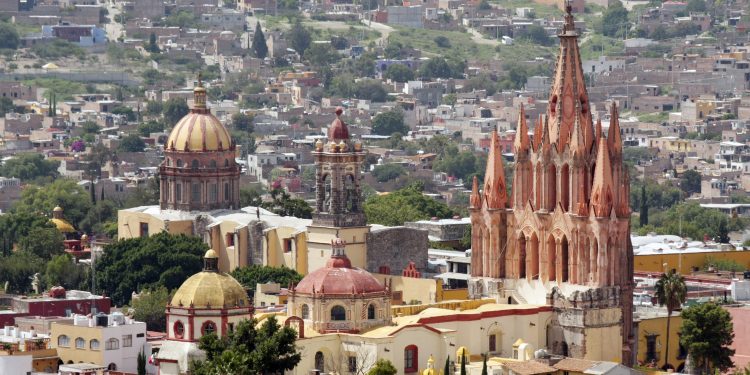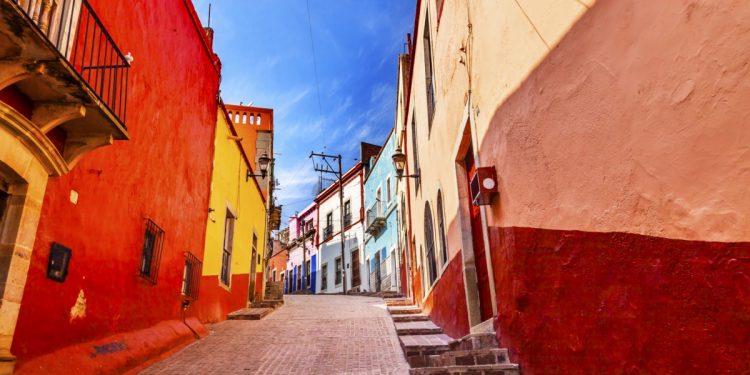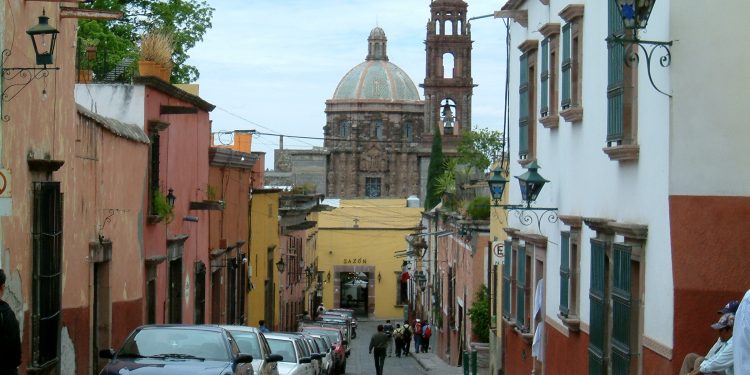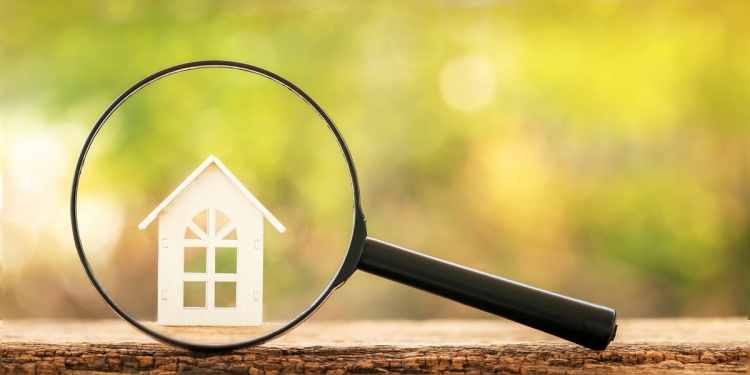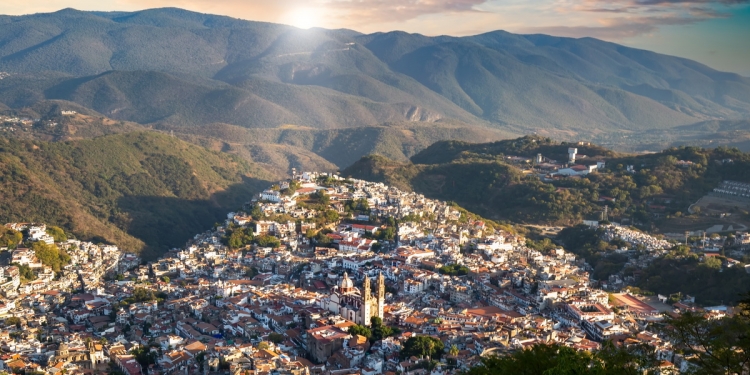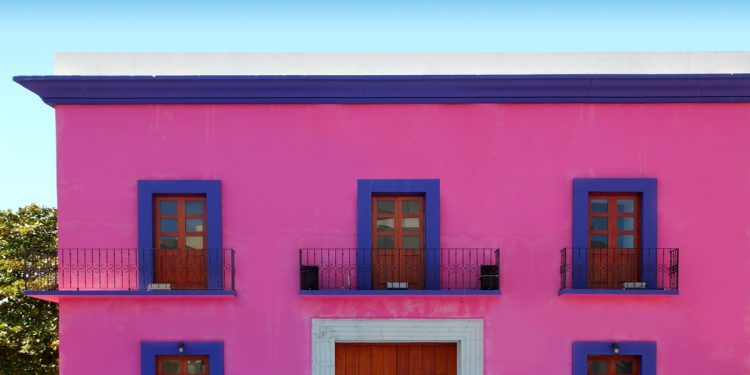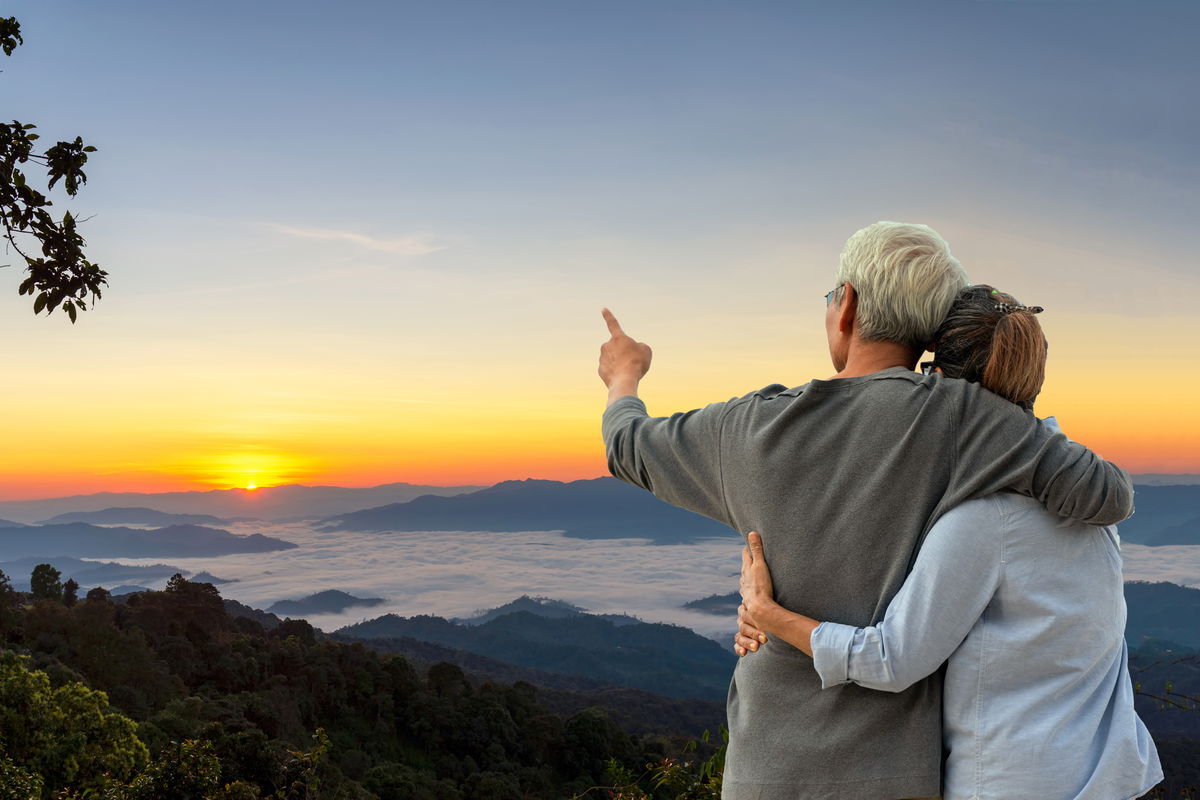Research and assess San Miguel Allende as a location for living, working or retirement in Mexico
Living in San Miguel Allende
San Miguel de Allende is situated about 170 miles by road northwest of Mexico City. The Spanish founded the city as San Miguel El Grande and the location served as an important military and commercial center when Zacatecas was one of the world’s principal silver mining centers, although the town was renamed in 1826 to San Miguel de Allende, in honor of Ignacio Allende—one of the protagonists of Mexico’s independence movement—who was born here.
San Miguel de Allende At-a-Glance:
Location Type
Population
139,297 (2005 Census)
Altitude
6,200 feet above sea-level
Time Zone
High/Low Temperatures
34F/1C (Nocturnal, Winter), 75F/24C (Daytime, Summer). Year-Round Average 66F/19C
Rainy Season?
San Miguel de Allende’s rainy season runs from late May to October each year, with tropical downpours happening on occasions.
Hurricanes?
San Miguel is inland and not affected by hurricanes
Local Economy:
Tourism, specialized retail commerce, art and language study, agriculture (beans, corn, wheat, alfalfa), chicken farms.
Expat Penetration
Very High*
Cost of Living
Higher*
Travel Guide
Safe in San Miguel Allende
*Relative to other foreign expat communities in Mexico
Ignacio Allende is one of the Mexico’s most famous historical figures who was a captain in the Spanish army and later sympathizer of the Independence Movement. Although he was captured and executed for treason, he is considered one of the founding fathers of Mexico and began the movement that led to Mexico becoming free of Spanish rule.
The city’s importance began to decline after the War of Independence and, by the turn of the 20th century, San Miguel de Allende was in real danger of becoming an abandoned ghost town. It was its Baroque-Neoclassical architecture which captured the attention of foreign artists who, in the mid 20th Century began to move here and set-up several cultural and artistic institutions in the town. Famous artists, including Siquieros, began to lend the town some notoriety, and so followed a steady stream of foreign students, artists and retirees who came to San Miguel. Today, tourism, art, culture, retail commerce, and agriculture are the mainstays of the local economy.
From its historical roots, San Miguel has been transformed from a quiet, quaint, cobble-lined town that really started to develop under the auspices of artists who adopted the town in the 1950s—to today’s explosion of popularity with so many foreign expatriates choosing to live (full-time or part-time) in Mexico that the town is one of the most densely populated expatriate areas in the entire country.
The overall feel of San Miguel remains colonial and bohemian, but the town is alive with activity and growth which continues to make this one of the most coveted places for living, working and retirement by foreign expatriates.
One of the most alluring features of San Miguel de Allende is that it has successfully managed to combine old-world charm with modern-day cosmopolitan lifestyle and amenities.
Most of the art and cultural activities which take place here are concerned with arts and learning, painting, weaving, photography and sculpture. San Miguel is also one of the most popular places for foreigners to come and learn Spanish, and so Spanish language schools have become an important part of the local economy.
The influx of expatriates and well-heeled Mexicans has not gone unnoticed by investors. The city is developing rapidly and the outskirts of the city are being developed with housing projects. Major retail brands, including Wal-Mart, Home Depot, Starbucks and others, have moved in, either to San Miguel proper or nearby Celaya. Franchises setting up in San Miguel are doing so to mixed reviews by local people, some of whom may be heard moaning about the inevitable commercialization these bring, but who probably also value the convenience they amenities offer, nonetheless. For local Mexicans, these investments bring much-needed infrastructure and jobs to what remains a semi-rural environment in the Mexican colonial heartland.
Continuing Popularity Among Visitors, Expatriates and Mexicans
San Miguel de Allende continues to be one of the country’s most important tourist centers. In part due to its location–it’s situated centrally the heartland of the colonial ‘silver’ cities– and also because the town’s charm is well supported by its excellent amenities (fine hotels, restaurants and shops) which cater well to modern visitor’s needs and desires.
Foreign expatriates continue to flock here, too. Some of the expats who arrived in the 1960’s and were left disappointed by the colossal transformation that took place have chosen to leave, but their spaces have been eagerly taken by others who hold no such nostalgia for the old and are quite content with the town in its present-day form.
Some of those moving-in are well-heeled Mexicans, who have established country homes here, often visiting at weekends, or renting out the homes to visitors when they themselves are not using the property.
Inward Investment
San Miguel de Allende, like a number of other prominent and popular Mexican towns and cities has experienced a massive surge of inward investment since the mid 1990’s. These capital inflows have created a renaissance of San Miguel’s historic center and especially the outlying areas in the mountainside which surround this picturesque town.
As San Miguel became one of THE most sought-after places to live in Mexico between 2000 and 2008, dozens of new building projects ensued and, when the most desirable areas of the historic center has been bought and/or restored, developers moved to fill the unquenching demand for homes by developing housing projects in the hills and mountains surrounding the city. See ‘real estate’ in this guide for more information.
Unesco World Heritage Site
The city’s 64 central historical blocks and its nearby sanctuary in Atotonilco were declared a UNESCO world heritage site in July 2008 in recognition of its architecture as well as its historical importance as one of the ‘birth cities’ of Mexican independence.
Downturn, But Not Out
The global economic downturn, a drop in language-study tourists (and the significant impact that has had on the arts and language study interests of the town), and the news-flow concerning Mexico’s drug-related violence have each and all served to take their toll on San Miguel’s fortunes over the last few years.
However, all the reasons foreigners came and settled here in the first instance remain. This is one of Mexico’s most beautiful places; it has a near-ideal climate, it’s relatively close to Mexico City and has excellent road transport links. The town is served by airports in Mexico City (approx 3.5 hours by car), Querétaro (90 minutes by car), and in León (90 minutes by car). Mexico’s colonial cities are extremely safe places to visit and live in, and the adverse news-flow which has, in part, caused the downturn, will itself pass, and people will, again, be turning their eyes with anticipation to San Miguel de Allende.
If you don’t mind a place that has a high density of foreign expatriates living there already, and if one of your requirements is to be in a community well-settled by other expats, then San Miguel de Allende should appear on your short-list of places to live in Mexico.
San Miguel de Allende is one of the most-written about places in Mexico. However, no amount of words can convey the almost mystic allure this place holds with the thousands of foreigners who live here, and the hundreds of thousands of foreigners and Mexicans who enjoy returning to visit this town each year. Like so many places in Mexico, you have to go and experience it to better understand—moreover to experience—just how San Miguel casts its spell.
Cost of Living in San Miguel de Allende
The cost of living in Mexico is typically lower in Mexico than it is the USA, Canada and Western Europe, although precise costs depend upon where you live and your lifestyle choices.
Cost of Living Report
To learn more about the cost of living in Mexico, connect to the Mexico Cost of Living page on Mexperience.
Regional and geographical cost variations do exist, and this part of the guide shows you how some goods and services at Cuernavaca vary from the average.
See Also:
Banks, Banking and Credit in Mexico | Money in Mexico
Blog Articles:
Money, Banking & Finance | Mexican Economy
Real Estate in San Miguel de Allende
Information about the real estate market in San Miguel Allende.
Real Estate Market in San Miguel de Allende
Prices of realty in San Miguel de Allende have risen considerably over the last decade. The influx brought investment to the historic center, where old ruined buildings have been lovingly restored by new owners and, as demand soared, the areas in the hills and mountainside surrounding this colonial city have been developed into homes, too.
Prices for all realty soared as copious quantities of cash poured gratuitously into the town from Mexico and abroad, and raised property prices to levels which (and as happened in so many of Mexico’s semi-rural towns) never reflected the production potential of the local economy.
San Miguel was one of Mexico’s “boom economy” stories of the 2000s and so it is now undertaking necessary period of consolidation and re-balance that will, in due course, bring about a much more mature and stable property market in the region.
Most real estate is sold through local realty agents who know the area and the surrounding region, as well as directly through the developers marketing major realty projects, either out of town or on one of the nearby golf courses.
Real estate types range from old colonial homes in the historic center (and which today command very high prices, making them affordably to only the wealthiest buyers), to more contemporary-looking homes around the center’s peripheries and outskirts, where you can also find condos and some golf-course property available on tailor made developments.
If you are looking for a restoration project, some may still be available locally. To find them, you could wander around the center, as some properties have ‘for sale’ signs posted; others do not; contacting a local realty agent is the best way of finding out what the status of an old (ruined) building may be, and to negotiate the sale if the owner is open to offers.
Rentals Market in San Miguel de Allende
San Miguel has a very buoyant local property rental market. Some luxury homes here are also vacation rentals (rented full or part time as such); offered for rent by the week or over week-ends. Longer term accommodations may be sought as well, and some people who own property here but only live in San Miguel for part of the year will rent their homes out during the period of their absence. Long term rental properties in San Miguel are offered through local realty agents and by individual property owners listing properties on the internet or local newspapers and magazines, as well as signs posted at restaurants, cafes and bars near the vicinity where the rentals are situated. Some owners post a notice on the property, e.g. “Se Renta,” with a contact telephone number. For short-term rentals, Airbnb has become the defacto go-to site for searching available homes and making bookings.
See Also:
Guide to Real Estate in Mexico | Home Maintenance | Home Security
Healthcare in San Miguel de Allende
San Miguel has two general hospitals serving the local community: the public hospital is funded and managed by the state, and a privately-managed hospital which offers a range of specialized healthcare professionals and services including pediatricians and cardiologists, ophthalmologists, orthopedics, etc. as well as a unit offering cosmetic procedures.
In addition to Mexico’s state sponsored healthcare provided via the country’s national health service IMSS, good quality healthcare services offered through private clinics with US -standard healthcare services exist in Cuernavaca. The privately-run out patient clinics available locally are ideal for day-to-day ailments, sprains, broken bones and other health matters which would normally be diagnosed and treated by a General Practitioner of medicine.
See Also:
Health and Healthcare in Mexico | Travel Health in Mexico
Local Climate in San Miguel de Allende
San Miguel de Allende enjoys a yearly average temperature of 66F/19C. Winter months can be cooler and drop to 34F/1C at night; summer months may reach highs of at least 75F/24C. The area’s weather is temperate and semi-arid. Summers are warm or moderately hot with a rainy season. Winters temperatures are moderate although cooler/colder days may occur on occasions when nortes (cold fronts) push down from the north.
Winter Climate:
January through March are the coolest months. Temperatures can range from lows of around 34F/1C overnight, to between 66F/19C and 73F/23C during the day.
Spring Climate:
April through June – springtime – are warmer months in San Miguel de Allende with temperatures ranging from 42F/6C overnight to 73F/23C in the daytime.
Summer Climate:
July through September are the hottest months, with temperature ranging from 46F/8C overnight, to 75F/24C or higher in the daytime. Temperatures and humidity reach their peak in May and June.
Autumn Climate:
Temperatures moderate again starting in September and daytime temperatures begin to climb down from their summer highs. Temperatures in the autumn months range from 37F/3C overnight to 68F/20C in the daytime.
Rainy Season:
San Miguel de Allende’s rainy season runs from May to September, with most of the rain falling in July and August. Torrential afternoon rains may be experienced several days a week and, in the peak temperature months between May and August, tropical storms may feature, too.
Hurricanes:
San Miguel is inland and not affected by hurricanes. Sometimes, if a hurricane falls on the Pacific Coast, climates inland may be affected, for example, with overcast skies and slightly lower temperatures.
See Also:
Weather and Climates in Mexico
Practical Information About Living in San Miguel Allende
This section contains links to guides where you can learn more about living in San Miguel Allende.
Accessibility / Transport
Getting Around San Miguel Allende
Getting Around
Transportation choices in Mexico
Communications
Staying in contact while living in Mexico
Money and Banking
Guide to Money in Mexico | Banks & Banking in Mexico
Practical Matters
Practical Information (Travel Guide)
Auto Insurance in Mexico
How to insure your foreign-plated car in Mexico
Safety in Mexico
Key Attractions
Travel Guide to San Miguel Allende
Mexico in your inbox
Our free newsletter about Mexico brings you a monthly round-up of recently published stories and opportunities, as well as gems from our archives.

